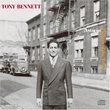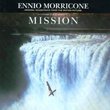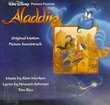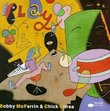| All Artists: Dennis Russell Davies, Denyce Graves, Michael Schade, Ana Maria Martinez, Eric Owens, Albert Dohmen, Vienna Radio Symphony Orchestra, Morgan State University Choir, Hungarian Radio Children's Choir Title: Glass: Symphony no 5 (Choral): Requiem, Bardo, Nirmanakaya Members Wishing: 1 Total Copies: 0 Label: Nonesuch Original Release Date: 1/1/2000 Re-Release Date: 10/3/2000 Genre: Classical Styles: Opera & Classical Vocal, Historical Periods, Modern, 20th, & 21st Century, Symphonies Number of Discs: 2 SwapaCD Credits: 2 UPC: 075597961829 |
Search - Dennis Russell Davies, Denyce Graves, Michael Schade :: Glass: Symphony no 5 (Choral): Requiem, Bardo, Nirmanakaya
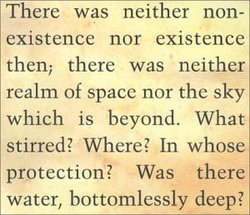 | Dennis Russell Davies, Denyce Graves, Michael Schade Glass: Symphony no 5 (Choral): Requiem, Bardo, Nirmanakaya Genre: Classical
Along with being perhaps the best-known contemporary classical composer, Philip Glass is also one of the most intensely prolific--almost frighteningly so. Scarcely a season seems to pass without a major premiere--and, a... more » |
Larger Image |
CD DetailsSynopsis
Amazon.com Along with being perhaps the best-known contemporary classical composer, Philip Glass is also one of the most intensely prolific--almost frighteningly so. Scarcely a season seems to pass without a major premiere--and, as Glass himself probably would be the first to admit, this factory level of productivity can lead to disappointingly uneven results. His music in particular requires an effort to separate the wheat from the chaff. The Symphony No. 5 began life as a commission from the Salzburg Festival to celebrate the new millennium. Glass took the occasion to reflect on the "process of global evolution," and culled texts from the gamut of world religions and cultures; these are set for various combinations of five vocal soloists, large chorus, and children's choir in a 12-movement work that lasts nearly 100 minutes--all of which is scored with a brilliant orchestral palette. The symphony's subtitle ("Requiem, Bardo, Nirmanakaya"), with its mix of Western and Buddhist terms, reflects Glass's multicultural ambitions, as well as the work's tripartite passage: from the past and stories of creation through consideration of death and a state of expectation to enlightened rebirth in the future. Together with familiar Bible verses are texts from the Tibetan Book of the Dead, the Koran, Hindu scriptures, Rumi, a Bulu creation story, and much more. It all could have made for an embarrassingly muddled, New Agey smorgasbord. Actually, however, it's one of the more thoroughly convincing works that Glass has created; it builds bit by bit, mosaic by mosaic, in a cumulative effect that becomes especially powerful in the stark contrasts of the final movements, which include a depiction of paradise that calls to mind the Klimt-like heaven of Mahler's "Symphony of a Thousand." Glass returns to some of the motifs from the CIVIL warS project, and the orchestral scope and vocal styling recall the grandiloquence of that period. But there's an even greater sense of play with timbral coloring, and a notable preoccupation with the quieter regions of the dynamic spectrum, as well as fascinating moments of harmonic complexity. Glass veteran Dennis Russell Davies led the Symphony's 1999 world premiere, and manages to maintain a similar level of excitement in the studio; he gives the score a sense of expanse and space to unfold, and masterfully aligns Glass's various layerings of musical forces. For all of the inevitable comparisons that might be made with that touchstone of humanistic choral symphonies, the Symphony No. 5 suggests not so much a contemporary take on Beethoven's Ninth as his Missa Solemnis--a cosmic testament that's full of gestures both grand and intimate. --Thomas May Similarly Requested CDs
|
CD ReviewsMinimalism on a maximumism scale Brett Stewart | Madison, WI United States | 10/09/2000 (5 out of 5 stars) "I am one of those Philip Glass fans that is always looking for him to write Koyaanisqatsi all over again, though through time I come to love all of his symphonic works. His 5th symphony is no exception. From beginning to end, it constantly builds until the opening of the symphony is recapitulated in the last moment. Everything seems to flow seemlessly in the next section, with increasing tension and power. The different texts add so much to the symphony. Not only do they add a psuedo-plot, but also add a dimension of universality. Glass added them to promote a world culture, and they succeed very well. It is amazing to see all the parallels between the different religions presented. Perhaps the most interesting thing is how this music is refered to as minimalism, but looking at the orchestration and sheer magnitude of the symphony there is nothing minimal about it. This symphony will undoubtedly be paralleled with Mahler's 8th. Preexisting texts are sung and a huge symphony, including a choir, a boy's choir, and 5 soloists, is used. Like Mahler, Glass uses these to move his audience with great power, but there are also moments of great quiet and delicacy. It all contributes to a symphony that rivals Mahler's great masterpiece. The cd's themselves come with a set of ten (one for each movement) cardboard text guides. One the inside of each one are the words sung, and on the outside is a representation of the words in their respective languages. This adds to the overall listening experience but it also adds to the price, which is my only complaint. It is alot to pay for one opus, but if you are a die hard Glass fan like I am, then perhaps price isn't an option. Still, this is a must have for any Glass fan and for me, at least until he gets around to rewriting Koyaanisqatsi." A Qualifiedly Dissenting View Thomas F. Bertonneau | Oswego, NY United States | 10/21/2000 (4 out of 5 stars) "I come not bury Philip Glass (1937) but to praise him. Some skepticism nevertheless mitigates the praise. Of the six works that Glass calls symphonies, four seem genuinely symphonic: The "Low" Symphony (1992), the First (1993)*, the Second (1994), and the Third, for strings (1995); but the "Heroes" Symphony (1990)*, the Fourth (1997)*, and the new choral FIFTH (1998) do not manage to achieve that "large-scale integration of contrasts" that musicologist Hans Keller once cited as the essence of the genre. The FIFTH is subtitled "Requiem, Bardo, Nirmanakaya," the latter two terms being synonyms, in Thibetan and Sanksrit, for the first. If the FIFTH fall short of the truly symphonic, how then to describe it? The term "suite" seems more appropriate. By labeling it as such, however, I do not mean to dismiss the new score, which remains enjoyable in that alpha-rhythm-generating way that characterizes Glass's early work. Indeed, the FIFTH strikes me as a return to the style of "Einstein on the Beach" and "Koyaanisqatsi," hypnotic, declamatory, ritualistic. (One of the other customer reviews notes this, too.) Glass keeps the vocal parts simple - the chorus usually sings in unison - so that discerning the words never poses any difficulty. The sonorities are frequently startling and beautiful. The texts come from an eclectic variety of mythic and theological sources, including the Thibetan "Book of the Dead" and various Hindu scriptures. But some disappointment must accompany the listener's experience of this symphony so-called, since the generic identification leads him to expect a tonal plan akin to that in a purely instrumental work like the Second Symphony. Despite the musical cross-references among movements, the sense of Keller's "large-scale integration of contrasts" is not there. Minimalism can, in fact, produce something which is at once chorally large and genuinely symphonic. Steve Reich accomplished this convincingly in "The Desert Music" (1984), to poems by William Carlos Williams. Glass's non-organic succession of moods would engage the attention a good deal more if wedded to a dramatic text that provided an argument. No one expects "Satyagraha" or "Akhenaten" to be symphonic, but the action, or at least the scene, helps sustain interest and point in a certain direction. If you follow Glass, you will want this, of course. If you're looking to find out what Glass is about, and don't already know, it might be wiser to start with the Naxos disc of his Violin Concerto and smaller works. Also: Nonesuch spreads the work over two discs, both of rather short measure. It is becoming the practice elsewhere that when two discs are required, but one gives only short measure, the two are priced as one. Decca gave us a Mahler Second this way and BIS gives us Magnard's Third and Fourth Symphonies this way. [*An asterisk indicates that I am unsure about the precise date of a given work.]" Hearing the Words David Edmonston | Cabin John, MD USA | 11/14/2001 (5 out of 5 stars) "I bought the Glass Symphony No. 5 recording mainly because I had tickets to hear the work live at the Kennedy Center in Washington DC, and I wanted to know in advance how to listen to the music when I went there. At first I listened to the CDs as I usually do--doing one or two other things at the same time. I thought, "That was nice music, but not exciting." Then I thought that since the work was a choral work in English, and the CDs came with such nice cards with all the words, I really should try reading along and focusing on the words. It was an investment in time and attention, but when I did it the symphony suddenly came alive to me, both musically and emotionally, and clearly that is how it was intended to be experienced. At the Kennedy Center I had the opportunity to hear Philip Glass himself speak informally before the concert, describing the writing of Symphony No. 5. He was accompanied by the Rev. James Parks Morton, the President of the Interfaith Center of New York, who had been closely involved with Glass in collecting the text excerpts from the "world wisdom traditions" that were used as a text in the work. In his talk, Glass confirmed that this work centers on the text. The symphony was intended as a large work that would be a tribute to the change of millennia. The music is in twelve sections (Glass seemed unsure whether they should be called movements), each treating a major theme found in the great scriptures. The text selections come from nearly every major world religion as well as wisdom stories from folk cultures worldwide. Not only does this work have geographic and cultural breadth, but also it has a breadth in time that boggles the mind, sweeping from "Before the Creation" to "Judgement and Apocalypse," and "Paradise." En route, the human condition is examined with sections entitled "Joy and Love," "Evil and Ignorance," "Suffering," "Compassion," and "Death." Here are some brief examples of the text:Before the Creation: The symphony opens with these memorable words: "There was neither non-existence nor existence then; there was neither realm of space nor the sky which is beyond. What stirred? Where?" (The Rig Veda, India)Joy and Love: "Come, come, whoever you are!/ Wanderer, worshipper, lover of leaving./ Come./ This is not a caravan of despair./ It doesn't matter if you have broken your vows a thousand times./ Still come, and yet again come!" (Rumi, Persia)Paradise: "There I have seen joy filled to the brim./ There falls the rhythmic beat of life and death:/ Rapture wells forth, and all space is radiant with light." (Kabir, India)Dedication: The closing lines are: "For as long as space endures/ And [for] as long as living beings remain,/ Until then may I too abide/ To dispel the misery of the world." (Bodhicaryavatara, Tibet)Glass pointed out that the last section repeats the music of the first section, "but a little more distantly." He said this is to suggest (as taught in Eastern traditions) that the great cosmic cycles of time repeat again and again, so as one cycle comes to an end another begins.Glass said that while he was writing he wondered if the work, drawing from so many sources, might come across as a mere "patchwork of texts" rather than as a unified whole. But he said when he heard it performed he was satisfied that it held together well. This is my experience also. I was impressed that in this work so many disparate cultural voices speak together with both unity and urgency. It is a tribute to the universality of these text selections, as well as the sensitivity with which they were arranged.Someone asked Glass how he came up with the music to fit each selection. He said that the music arose from the words themselves as he meditated on them, aided, of course, by a lifetime of composing music for songs and choral works.Someone else asked Glass whether working with these texts had affected him spiritually. He answered that they had very much affected him and that he continues to study the wisdom teachings. Currently he is reading "Black Elk Speaks," and, he said, some of these texts have found their way into more recent works, including a Symphony No. 6 on which he is now working.During the Kennedy Center performance, as the choruses and soloists lingered on every word, and the music embraced the beautiful thoughts of the great thinkers and spiritual seekers of the world, I felt emotionally overwhelmed. Other people too, were deeply moved as evidenced by a ten minute standing ovation for the hundreds of orchestral and choral performers, for the conductor, Dante Anzolini (who also conducted for the recording), and for Glass himself, who joined the performers for a bow."
|

 Track Listings (6) - Disc #1
Track Listings (6) - Disc #1

